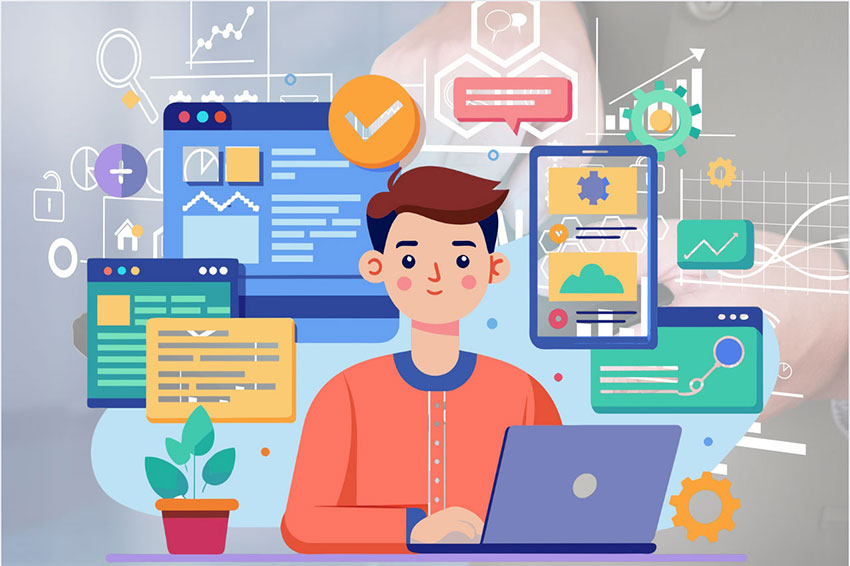
Oktober 7-2025
By: Marisa
In today’s fast-moving business world, organizations are required to constantly adapt and innovate. This dynamic environment also calls for a transformation in how we manage employee performance. The traditional, rigid, and centralized annual performance evaluation model is becoming obsolete — replaced by a more flexible, responsive, and development-oriented approach.
Why Annual Evaluations Are No Longer Enough
Traditional performance evaluation models often have several weaknesses:
- Too focused on the past: Annual evaluations tend to review what has already happened rather than prepare employees for future challenges.
- Lack of real-time feedback: Feedback given only once a year is ineffective for quick improvement and adaptation. Employees need timely guidance to overcome challenges or sharpen new skills.
- Neglect of continuous growth: The end-of-year evaluation focus often overlooks ongoing learning and development throughout the year.
- Potential bias: Yearly reviews are more prone to evaluator bias since too much information must be recalled and assessed at once.
- Limited employee empowerment: Employees feel they have little control over their own growth when the process is overly formal and top-down.
Moving Toward Sustainable Performance Management
Sustainable performance management represents a paradigm shift — from merely assessing to actively developing employee potential. It involves a series of integrated, recurring practices that focus on frequent feedback, adaptive goal-setting, and continuous development.
Here are the key pillars of sustainable performance management:
- Continuous Feedback and Two-Way Conversations
Instead of waiting for the annual review, feedback is given regularly and informally. This could take the form of short weekly conversations, bi-weekly check-ins, or ad-hoc feedback sessions. Such feedback should be specific, constructive, and solution-oriented.
It is equally important to encourage two-way communication, allowing employees to provide feedback to their managers as well. This helps build a culture of transparency and trust.
- Adaptive Goal Setting (OKRs, SMART, etc.)
Goals are no longer fixed for an entire year. In sustainable performance management, goals are flexible and adaptive — frequently aligned with the organization’s evolving strategy.
Approaches such as Objectives and Key Results (OKRs) or SMART goals (Specific, Measurable, Achievable, Relevant, Time-bound) can be used to set clear and measurable goals that align with business priorities. These goals are reviewed and adjusted periodically.
- Continuous Employee Development
The primary focus is on employee growth and long-term capability building — not just identifying skill gaps, but also creating opportunities for continuous learning. This can include:
- Training and workshops: Investing in relevant learning programs.
- On-the-job learning: Assigning new and challenging projects.
- Mentoring and coaching: Connecting employees with experienced mentors or coaches.
- Career path development: Helping employees plan and achieve their long-term career goals.
- Leveraging Technology for Facilitation
Technology plays a critical role in supporting sustainable performance management. Software platforms can help facilitate:
- Feedback recording: Allowing managers and employees to document and track feedback.
- Goal management: Assisting in goal setting, tracking, and adjustments.
- Development needs identification: Analyzing performance data to identify areas for improvement.
- Recognition and rewards: Enabling instant acknowledgment of employee contributions.
Benefits of Sustainable Performance Management
Implementing this approach brings several significant benefits:
- Improved individual and team performance: Frequent feedback and guided development help employees reach their full potential.
- Higher employee engagement: Employees feel valued and motivated when they see genuine investment in their growth.
- Better retention: A supportive development environment reduces turnover rates.
- Greater organizational agility: Companies can respond to market changes more quickly and effectively.
- A stronger learning culture: Promotes an environment where continuous learning and improvement become the norm.
Starting the Transformation
The transition from annual evaluations to sustainable performance management requires top management commitment and a shift in organizational culture. Initial steps may include:
- Education and training: Equip managers and employees with the skills and mindset for continuous feedback and development.
- Pilot projects: Start small with a department or team to test the new approach.
- Choosing the right technology: Invest in software tools that support the process.
- Start small: Avoid trying to change everything at once. Focus on one or two key pillars first.
Sustainable performance management is a long-term investment in the company’s most valuable resource: its people.
By shifting from static evaluation to continuous development, organizations can build a workforce that is more resilient, adaptable, and future-ready.
To make this vision a reality, companies need to foster systems, cultures, and habits that support open feedback, adaptive goals, and lifelong learning. These are the foundations of truly sustainable high performance. Visit campsite.bio/qqgroup and follow our social media channels for daily inspiration on leadership, work-life balance, and personal growth.
Together, let’s move forward toward a stronger Indonesia!
